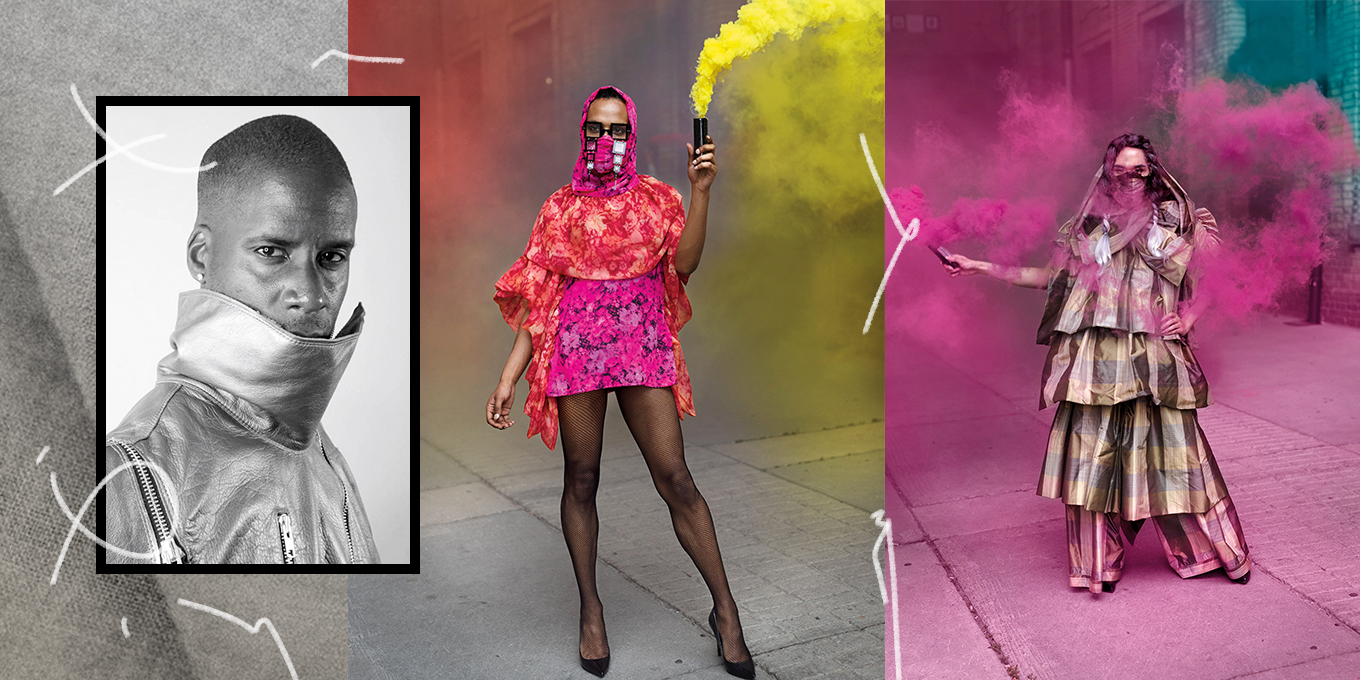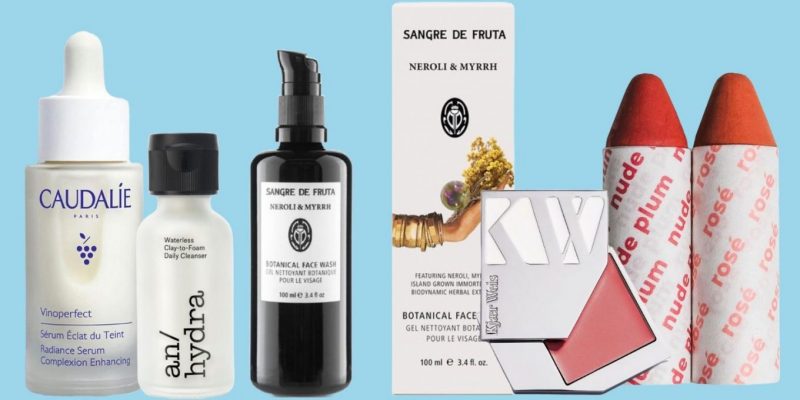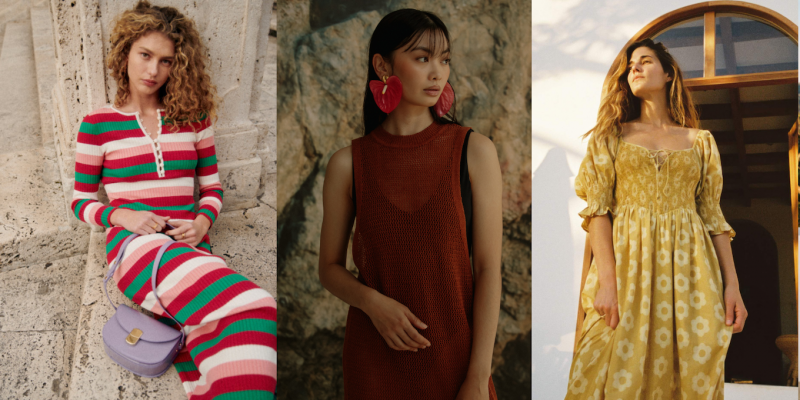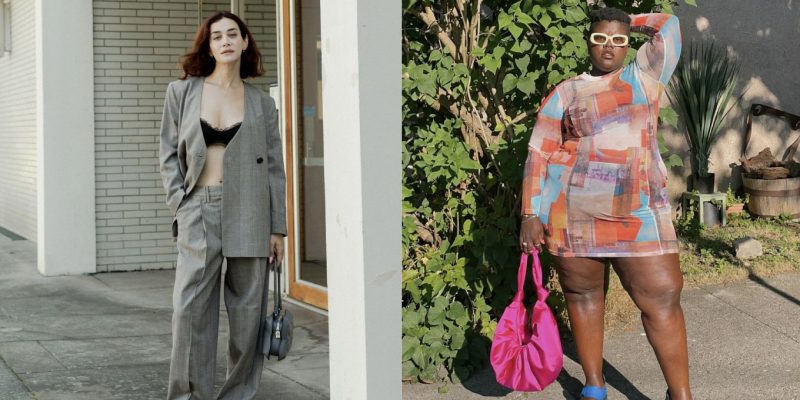Trends
Canadian Designer Spotlight: Mic. Carter On Making Fashion More Gender-Fluid
“I want to make clothes that have people feeling like their most authentic self.”
by : Erica Ngao- Aug 26th, 2020

Julia Greco
Before Mic. Carter began to design, he would cobble outfits together with pieces from fast fashion chains and second-hand stores. It was often an uncomfortable experience for him and resulted in a lot of stares because he is, in his own words, “very tall and very Black.” This lack of welcoming shopping spaces inspired the Toronto-based genderqueer designer to launch L’Uomo Strano – which is Italian for “the strange man” – a feminine gender-nonconforming label. With a vision inspired by Afrofuturism and a sense of community, Carter creates pieces that are the ultimate form of glam self-expression. “I want to make clothes that have people feeling like their most authentic self,” he says.
He also strives to impact his students with this sentiment. In addition to teaching full-time at an elementary school, Carter developed and taught the first-ever course on non-binary design at Ryerson University’s School of Fashion last year. “I’m really grateful that conversations about Blackness and queerness are being had and that people are really championing designers who sit at the intersection of various identities,” he says. His latest collection, which was presented virtually for the 15th anniversary of Fashion Art Toronto in June, came together during the weeks of global Black Lives Matter protests. Carter recalls constructing garments at home while refreshing Twitter for updates. “Where’s the space for fantasy within the state of protest and pandemic?” he wonders aloud. “I’m still sitting on that question.”
On the inspiration behind his new collection
“When I sat down to design – and George Floyd, Breonna Taylor and Ahmaud Arbery were on my mind – it was like a form of grief therapy. Simultaneously, I was blown away by the levels of allyship and advocacy in so many different types of folks for Black and brown bodies. It really instilled a level of hope in me, and so [the collection] was about reconciling those two emotions.”
On his vision for the future of fashion
“The push for everything to be seasonless helps with the sustainability and narrative creation. Having more – or fewer, really – conversations about what is the men’s or women’s section and making [fashion] more gender-fluid…that would be an absolute dream. We still have a ways to go with centring people with varying abilities as well as Black, Indigenous and other people of colour.”
On his advice for emerging designers
“Find your tribe. Being a designer can be super isolating, so being surrounded by other creatives who are figuring out that pipeline, from creation to sales, is important. It took me a couple of years to be able to acknowledge and accept that I can’t do this on my own. Being able to access mentorship is key. Also, know who you are [creating] for and ensure that it’s a co-created moment. This leaves everybody feeling so much more joyous at the end of the day.”
This article originally appeared in the September 2020 issue of ELLE Canada, which is on newsstands across Canada on August 17 and on Apple News+. Subscribe here.
READ MORE:
Canadian Designer Spotlight: Victoria Hayes on Reworking The Fashion Schedule
Why You Should Invest in a Skirtsuit This Fall
This Interactive Index is Showcasing Black Designers in Canada
Newsletter
Join our mailing list for the latest and biggest in fashion trends, beauty, culture and celebrity.
Read Next

Beauty
10 Luxe Household Scents That Smell Amazing
Including Diptyque dishwashing liquid, Canadian-made room sprays and so much more.
by : Katherine Lalancette- Apr 17th, 2024

Beauty
10 Sustainable Beauty Brands to Know About This Earth Month
Refillable, Waterless and sustainable, oh my!
by : Allie Turner- Apr 17th, 2024

Culture
Discover Club Med’s Stunning Exclusive Collection
Vacation destinations that bring pure luxury and comfort.
by : ELLE Canada- Apr 8th, 2024




